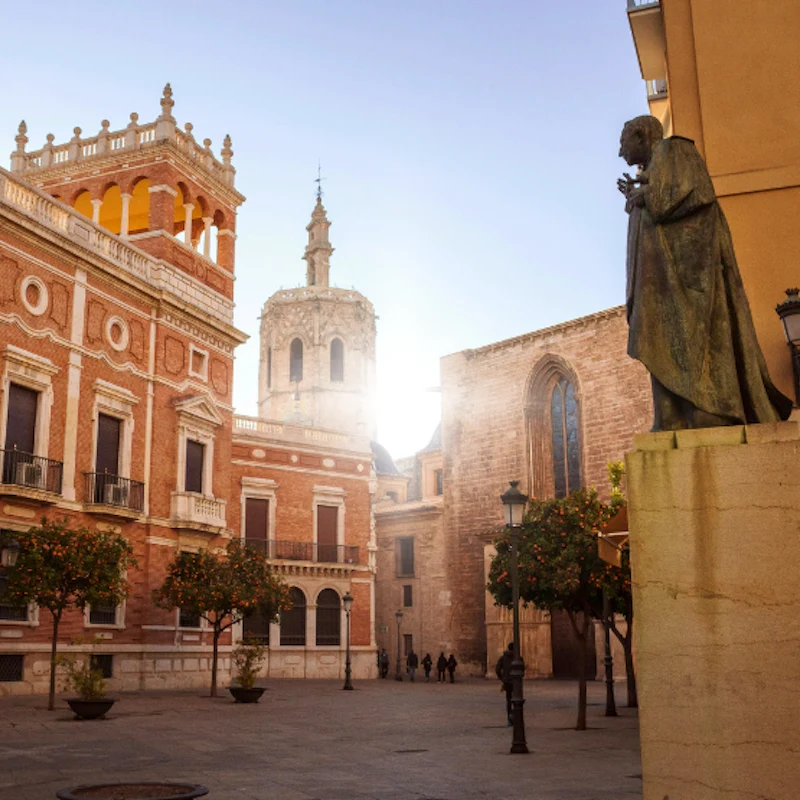Using Electronics in Spain (2026): Plug Types & Adapters
Sarah Pardi - December 30, 2025
Home > Travel Planning > Using Electronics in Spain (2026): Plug Types & Adapters
Share this post
Before heading abroad to Spain, there are a lot of boxes you need to check off the to-do list.
There's everything from making sure you meet Spain's entry requirements to travel insurance requirements, and more fun things like which cities you're going to visit and what sites you're going to see.
However, there's one thing that falls somewhere between the administrative aspects of travel and the on-the-ground ones: and that is making sure your electronics stay charged.
After all, who wants to be in the middle of a foreign city when their phone dies? Not us, and not you either.
This is why it's important for you to know how to charge your electronics in Spain. More likely than not, the plug type you use back home won't be compatible with the systems in Spain, even in hotels.
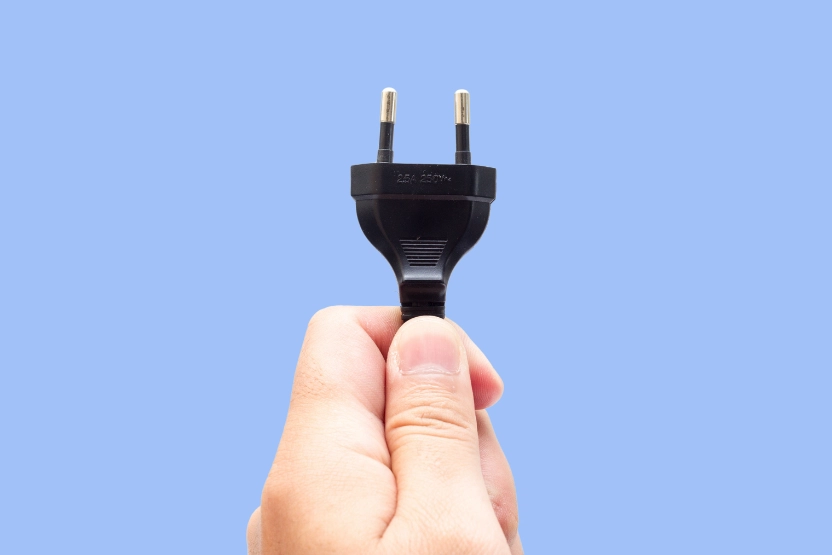
Spain uses Type C and Type F plugs
Spain uses two types of electrical plugs: Type C and Type F.
Type C and Type F are compatible plug types, meaning they can both be used in the same electrical socket, and not one is better than the other per se.
The difference between Type C and Type F isn't in the prongs themselves. They both have two cylindrical ones.
Type C prongs are slightly (barely) thinner and are not grounded. Type F prongs are slightly thicker and are grounded.
When you're purchasing a power adapter, you don't have to worry about whether you choose Type C or Type F, as long as it says it is Type C and/or Type F compatible. All you need to worry about is that it makes it in your luggage!
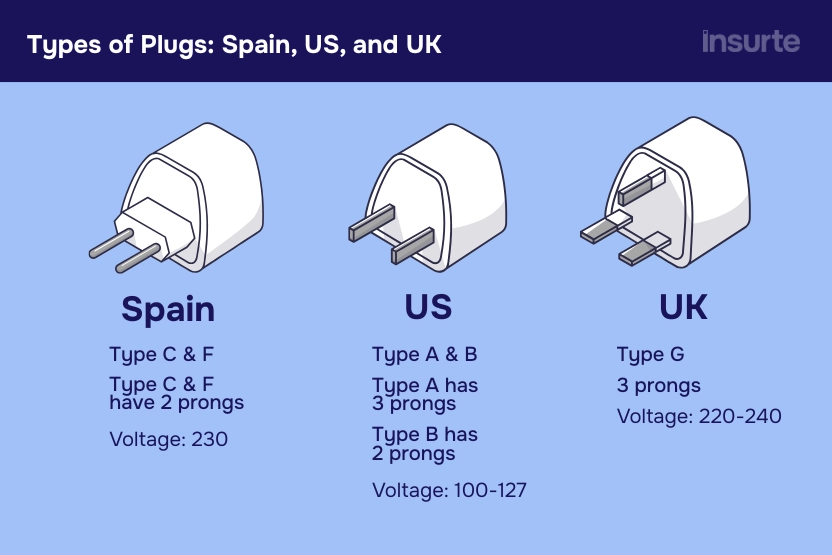
If you're coming from the US or the UK, you will need to get a power adapter for your trip to Spain.
Without it, your electrical plugs (such as phone chargers, laptop chargers, or blow dryers) won't fit into the sockets, meaning your devices can't be charged or used.
What adapter is needed for Spain
The answer is simple: An adapter that is compatible with Type C and/or F sockets.
In addition to that, it also needs to be compatible with the type of plugs that you have. This means that your plug needs to fit into it too.
Adapters work like this: You plug your cord into one side. The other side plugs into the wall of the foreign country you're visiting.
Adapters essentially change the shape of your current electrical cord and plug, while still allowing the electricity to safely run through it.
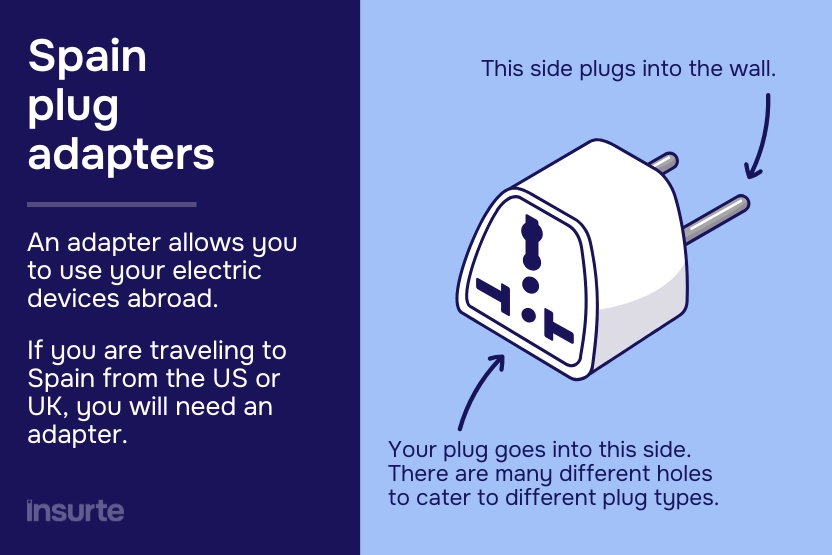
Multi-travel adapters allow for many different types of plug shapes to be plugged into them (see the photo above). This is helpful for a couple of reasons.
One, you (the user) can use it with a ton of different types of plugs.
Second, the company that made the adapter can sell it across multiple markets.
Some plug adapters also have USB and USB-C inputs on the side, but not all of them do. If this is something you want, make sure that you verify the adapter has that functionality before purchasing it.
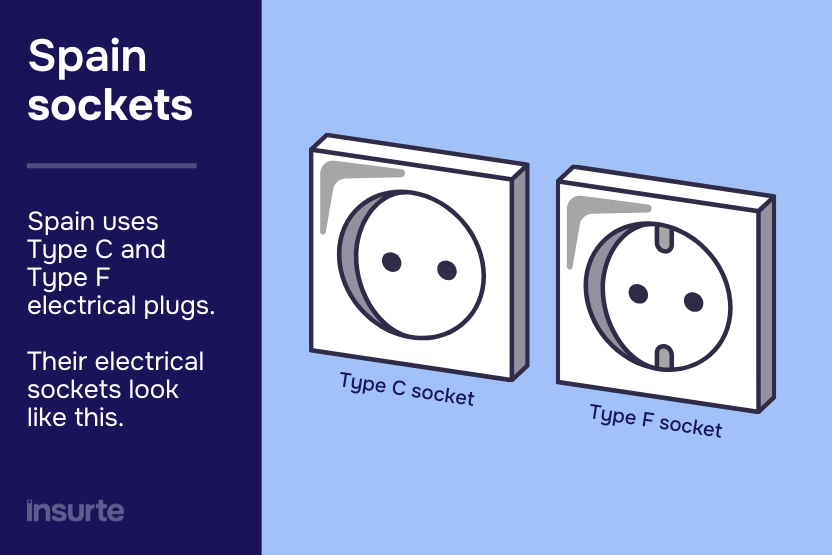
What you need to know about voltage
Don't worry, we're not going to get too science-y here!
Different countries run different voltages through their electrical systems.
You can think of voltage as the pressure that pushes electricity through the wire (kind of like water being pushed through a hose).
Spain runs on a higher voltage than the States, but the same voltage as the UK.
But what does that mean for you?
If you're from the States: Your electronics were designed to work safely and effectively with 100-127 volts.
If you're from the UK: Your electronics were designed to work safely and effectively with 220-240 volts.
Spain runs on 230 volts.
Because of this, if you're traveling from the States, you may need to consider getting a converter (also called a transformer) in addition to a plug power adapter.
When a converter is needed
A converter is needed when your electronics were designed to operate with a voltage that is different than your destination.
Trip to Spain in 3, 2...
Make sure you're covered before you get to 1!
That said, most new phones and laptops have built-in converters. This allows you to safely charge your phone or use your laptop with a power adapter alone.
(As a word of caution, it is important to double-check that your phone/laptop is safe to use without a converter. You can find this information by going to the official website of the brand of your device. Make sure you pay attention to the make/model/year.)
Other electronics likely do not have a converter built in. If you're traveling with:
- Hair tools (curling irons, straighteners, blow dryers, etc.)
- Personal grooming tools (electric razors, etc.)
- Small appliances (coffee machines, etc.)
You should consider purchasing a converter in addition to a power adapter.
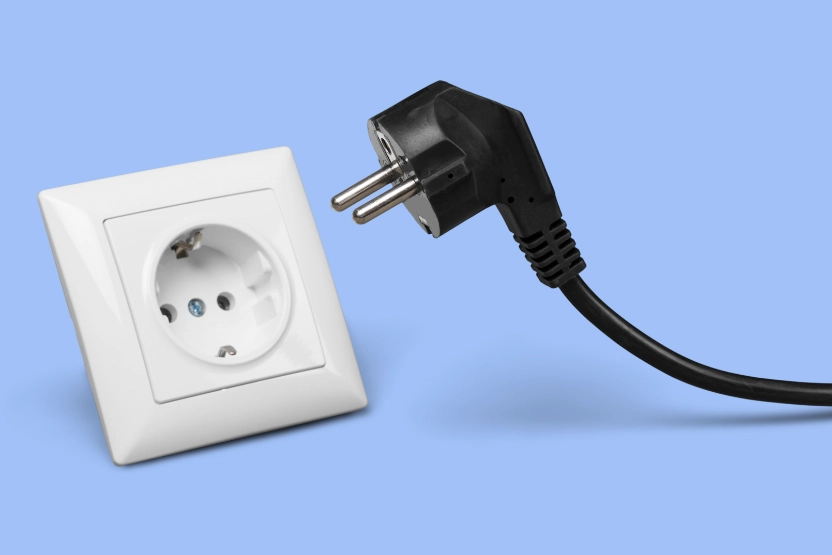
What happens if you don't use a converter
First and foremost, a converter is for your own safety.
When a device (like a curling iron) was designed for lower voltage, higher voltage running through it can have adverse effects like the tool overheating, sparks, fire risks, and shorting the tool, leaving it utterly useless.
If you don't use a voltage converter, you are putting yourself at risk - and you may ruin your device.
That said, not using a converter doesn't mean that any of those risks will actually happen, but they could, and at any time.
Some travelers choose not to buy a converter, and they still use their personal electronics abroad. While this is possible, it does come with its risks.
It's always recommended to use a converter.
Where to buy a power adapter and converter
Plug adapters and converters can be found very easily, especially by shopping online.
Oftentimes, department stores will have adapters in their travel section. Electronic stores should also have them.
All of that said, you can also find them in airports, though they are going to be more expensive there (for the convenience).
Spain adapter compatibility
Spain travel adapters can also be used in:
- Austria
- Belgium
- Bulgaria
- Croatia
- Czech Republic
- Denmark
- Estonia
- Finland
- France
- Germany
- Greece
- Hungary
- Iceland
- Italy
- Latvia
- Liechtenstein
- Lithuania
- Luxembourg
- Netherlands
- Norway
- Poland
- Portugal
- Romania
- Slovakia
- Slovenia
- Sweden
- Switzerland
- Turkey
- Ukraine
And that is just the list of European countries!
There are several other countries in the world that use the same plug type; just double-check check voltage as that varies.
Other popular countries include: parts of Brazil, Egypt, parts of India, Morocco, the Philippines, South Korea, parts of Thailand, Vietnam, and more.
FAQs; Spain plug adapters
Related posts
Upcoming travels ? Get Insured !
Find the right insurance for your trip by using our powerful comparison tool!
Sarah Pardi - December 27, 2025
Sarah Pardi - December 26, 2025
Sarah Pardi - December 19, 2025
Sarah Pardi - December 12, 2025

